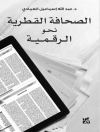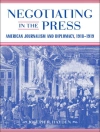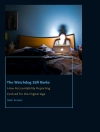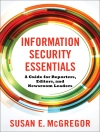The production and consumption of news in the digital era is blurring the boundaries between professionals, citizens and activists. Actors producing information are multiplying, but still media companies hold central position. Journalism research faces important challenges to capture, examine, and understand the current news environment. The SAGE Handbook of Digital Journalism starts from the pressing need for a thorough and bold debate to redefine the assumptions of research in the changing field of journalism. The 38 chapters, written by a team of global experts, are organised into four key areas:
Section A: Changing Contexts
Section B: News Practices in the Digital Era
Section C: Conceptualizations of Journalism
Section D: Research Strategies
By addressing both institutional and non-institutional news production and providing ample attention to the question ‘who is a journalist?’ and the changing practices of news audiences in the digital era, this Handbook shapes the field and defines the roadmap for the research challenges that scholars will face in the coming decades.
Jadual kandungan
Introduction – Editors
PART I: CHANGING CONTEXTS
1. Digital Journalism and Democracy – Beate Ursula Josephi
2. Global Media Power – Owen Taylor
3. Digital News Media and Ethnic Minorities – Eugenia Siapera
4. The Business of News – Rasmus Kleis Nielsen
5. Digital Journalism Ethics – Stephen J.A. Ward
6. Social Media and the News – Alfred Hermida
7. Networked Framing and Gatekeeping – Sharon Meraz & Zizi Papacharissi
8. The Intimization of Journalism – Steen Steensen
9. Emotion and Journalism – Karin Wahl-Jorgensen
PART II: NEWS PRACTICES IN THE DIGITAL ERA
10. Networked Journalism – Adrienne Russell
11. Hybrid News Practices – James F. Hamilton
12. The Ecology of Participation – Renee Barnes
13. Innovation in the Newsroom – Steve Paulussen
14. Outsourcing Newswork – Henrik Örnebring & Raul Ferrer
15. Semi-professional Amateurs – Jérémie Nicey
16. Sources as News Producers – Matt Carlson
17. Activists as News Producers – Yana Breindl
18. Citizen Witnesses – Stuart Allan
19. Hyperlocal News – Andy Williams & David Harte
PART III: CONCEPTUALIZATIONS OF JOURNALISM
20. Normative Models of Digital Journalism – Daniel Kreiss & J.S. Brennen
21. Mass, Audience, and the Public – Laura Ahva & Heikki Heikkilä
22. Digital Journalism as Practice – Bart Cammaerts & Nick Couldry
23. Mapping the Human-Machine Divide in Journalism – Seth C. Lewis & Oscar Westlund
24. Spaces and Places of News Consumption – Chris Peters
25. News Institutions – David M. Ryfe
26. Journalistic Fields – Tim P. Vos
27. News Networks – David Domingo & Victor Wiard
28. News Ecosystems – C.W. Anderson
29. Liquid Journalism – Anu Kantola
PART IV: RESEARCH STRATEGIES
30. Ethnography of Digital News Production – Sue Robinson & Meredith Metzler
31. Adopting a ′material sensibility′ in journalism studies – Juliette De Maeyer
32. Reconstructing production practices through interviewing – Zvi Reich & Aviv Barnoy
33. Sampling Liquid Journalism – Anders Olof Larsson, Helle Sjøvaag, Michael Karlsson, Eirik Stavelin & Hallvard Moe
34. Big Data Analysis – Axel Bruns
35. Q-Method and News Audience Research – Kim Christian Schrøder
36. Practicing audience-centred journalism research – Irene Costera Meijer
37. Multi-method Approaches – Wiebke Loosen & Jan-Hinrik Schmidt
Mengenai Pengarang
Director and Associate Professor at the School of Journalism at the University of British Columbia (Canada). An award-winning online news pioneer, digital media scholar, journalism educator, his research focuses on the reconfiguration of journalism, social media, and emerging forms of digital storytelling. He is the author of Tell Everyone: Why We Share and Why It Matters (2014, Double Day Canada) and coauthor of Participatory Journalism: Guarding Open Gates at Online Newspapers (2011, Wiley-Blackwell). A founding news editor of the BBC News website in 1997, he spent 16 years working as a BBC journalist, including four years as a correspondent in the Middle East.












